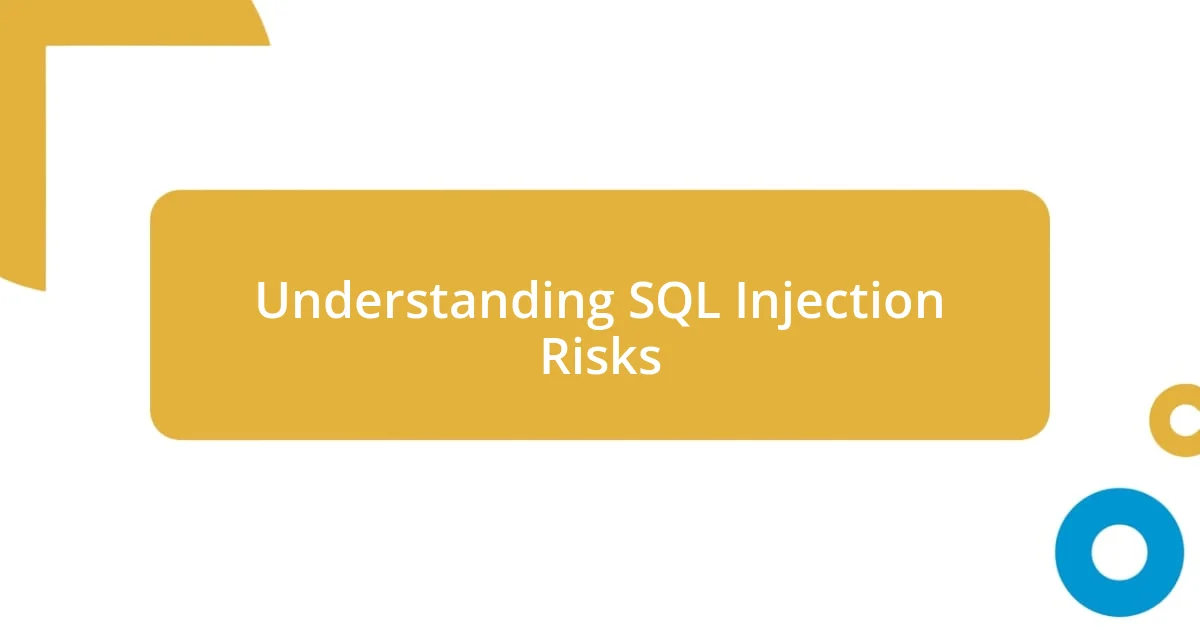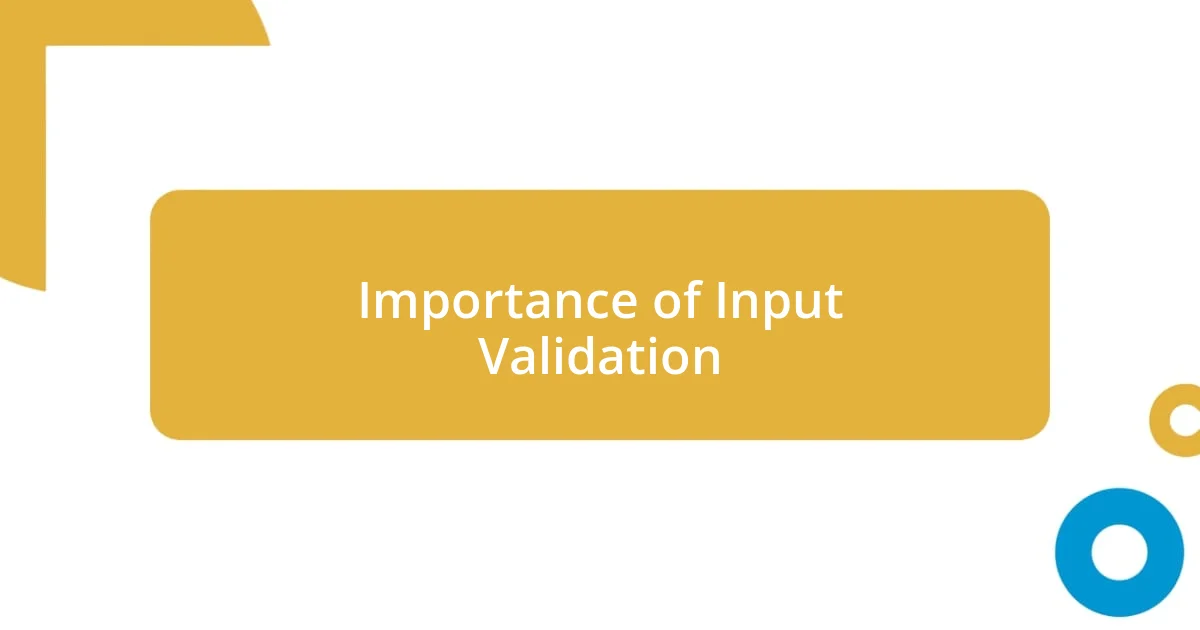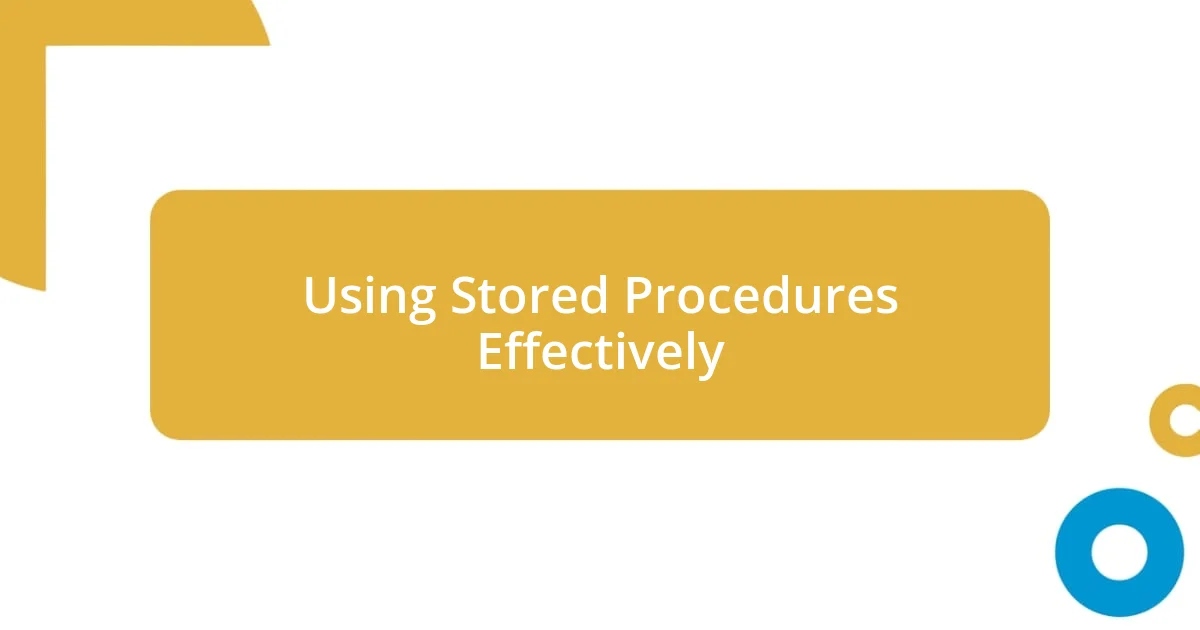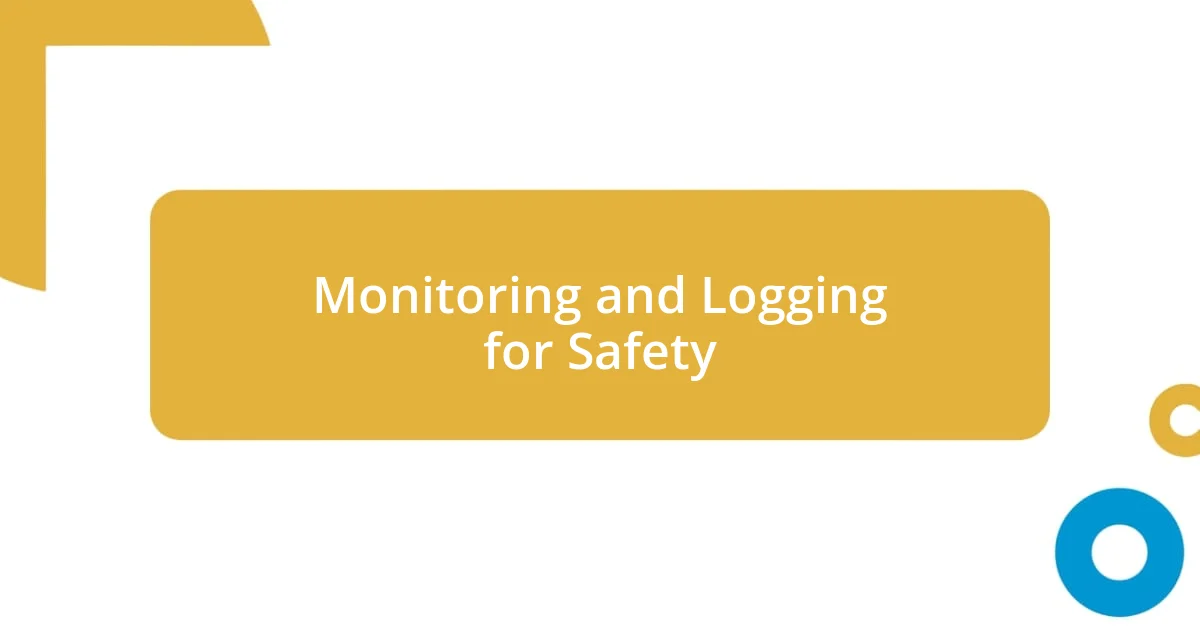Key takeaways:
- The emotional and reputational impact of SQL injection attacks can be severe for both large corporations and small businesses, highlighting the critical need for strong security measures.
- Implementing input validation, parameterized queries, and stored procedures significantly enhances database security and minimizes the risk of SQL injection vulnerabilities.
- Regular security testing, monitoring, and logging are essential for identifying potential weaknesses in applications, fostering accountability, and preventing attacks before they occur.

Understanding SQL Injection Risks
When I first encountered SQL injection, I found it startling how such a simple oversight could lead to significant vulnerabilities. The risk often lies in underestimating the power of unvalidated input—malicious actors can exploit these weak points, sometimes with devastating consequences. It makes you wonder, could a single misplaced query really compromise an entire database?
I recall a case from my early career where a client’s database was breached through a SQL injection attack, exposing sensitive user information. This incident not only affected their reputation but caused a ripple of distress among their users. It’s a poignant reminder of just how critical it is to implement robust security measures; the emotional fallout of trust lost can be just as damaging as the financial implications.
Many people believe that SQL injection is a problem exclusively for large corporations, but that’s a misconception. In reality, small businesses can be equally targeted, and the repercussions can be just as severe. Isn’t it eye-opening to think that without a proactive approach, any database can become a tempting target for attackers? Understanding these risks isn’t just a technical necessity—it’s a vital step towards safeguarding our digital environment.

Common SQL Injection Techniques
Diving deeper into the realm of SQL injection, I’ve unearthed a variety of common techniques that malicious users employ. These methods showcase the cleverness of attackers and the necessity for developers to understand them fully. During one of my first projects, I witnessed how easily an attacker could manipulate inputs to access sensitive data, which left a lasting impression on me regarding the importance of preventive measures.
Here are some prevalent SQL injection techniques:
-
Tautology-based Injection: By using a statement that always evaluates to true, attackers can bypass authentication checks. In practice, this might look something like
OR '1'='1', allowing them access to restricted areas. -
Union-based Injection: This technique enables the attacker to combine results from multiple SQL queries into a single output. Imagine discovering that your query is returning not just user info but also data from unintended tables.
-
Blind SQL Injection: When a web application does not display errors, attackers engage in a guessing game. They infer data based on system responses, like timing or boolean results—it’s a stealthy and worrisome approach that keeps the attacker under the radar.
-
Out-of-Band Injection: This is a less common method where attackers use different channels to retrieve data. It’s a more sophisticated technique that often requires more advanced skills but can be equally damaging.
Encountering these techniques made me realize the need for vigilance and a proactive stance in securing applications. Knowing how these injections work opens our eyes to necessary defenses, reinforcing my belief in continual learning and adaptation in cybersecurity practices.

Importance of Input Validation
The significance of input validation can’t be overstated. From my perspective, it’s akin to having a bouncer at a nightclub—ensuring only those with the right credentials gain access. I’ve experienced firsthand how a lack of proper input validation led to a preventable database breach during a project I was involved in. It was disheartening to see how easily an attacker capitalized on this weak point, ultimately resulting in a costly cleanup for the team and unnecessary anxiety for the users affected.
Not only does input validation protect against vulnerabilities, but it also fosters a secure environment for users. Reflecting on the relationships I’ve built with my own user base, I realized the importance of trust. When users feel secure, they’re more likely to engage with the platform confidently. During a critical phase of one project, I noticed increased user activity when we implemented stricter validation measures—it was as if our users were responding positively to the heightened sense of security.
At its core, input validation serves as the first line of defense against potential threats. The emotional weight of knowing you’ve safeguarded your application from harm cannot be overlooked. Finding the balance between user experience and security can be a challenge, but the payoff in user trust and safety makes it all worthwhile.
| Aspect | Importance of Input Validation |
|---|---|
| Protection | Prevents malicious input from compromising databases. |
| User Trust | Enhances user confidence in the application. |
| Cost Savings | Avoids the financial and reputational damage of data breaches. |
| First Line of Defense | Acts as an initial barrier against attacks. |

Implementing Parameterized Queries
When implementing parameterized queries, I’ve found that they are one of the most effective defenses against SQL injection attacks. I remember the first time I switched from dynamic queries to parameterized ones in a project; it was like turning on the lights in a dark room. Suddenly, I had a clearer understanding of how inputs were being processed, and it genuinely enhanced the security posture of my application.
Using parameterized queries means you define the SQL code and separate the parameters being passed, which makes it nearly impossible for an attacker to manipulate the query. I recall when I was mentoring a junior developer; she was initially skeptical about the change but soon embraced it after realizing how simple it was to prevent a potential disaster. The confidence that bloomed in her as she grasped the advantages of this technique was truly inspiring.
One of the most striking aspects of using parameterized queries is the peace of mind they provide. Whenever I’ve had to present my code to stakeholders, there’s a sense of pride knowing I’ve implemented these best practices. I often ask myself, “Wouldn’t you prefer knowing your database is protected, rather than waiting for a breach to occur?” This mindset has transformed my approach to software development, emphasizing prevention over reaction in security practices.

Using Stored Procedures Effectively
Stored procedures are a powerful tool in the fight against SQL injection, and I’ve seen their effectiveness firsthand. When I started using stored procedures in my own projects, it felt like a significant upgrade in my approach to database safety. By encapsulating the SQL logic within a procedure, I provided a defined pathway for data interaction, minimizing the risk of unexpected inputs tampering with my queries.
During one project, I was tasked with refactoring existing legacy code that was riddled with vulnerabilities. By converting those vulnerable queries into stored procedures, I created a clear boundary between the application and the database. The transformation was gratifying—not only did it enhance security, but it also streamlined maintenance. I often think, could there be a more elegant way to safeguard data while boosting performance?
Moreover, utilizing stored procedures encourages code reuse, which can simplify the development process. I remember discussing this with my colleagues during a team meeting; everyone agreed that having common database operations neatly wrapped up in procedures saved us time. It was a tangible way to foster collaboration and efficiency amongst team members. When you consider the benefits of security, efficiency, and maintainability, it raises the question: why wouldn’t every developer implement stored procedures in their applications?

Regular Security Testing Practices
Regular security testing practices are essential, as they help identify vulnerabilities before attackers can exploit them. I vividly recall participating in a penetration testing exercise recently, and the moment I observed the tools in action was eye-opening. Each discovered vulnerability felt like a wake-up call, reinforcing the idea that proactive measures are crucial in maintaining a strong security posture.
In my experience, consistent security audits create a culture of accountability within development teams. I remember sharing the results of our last audit during a team meeting; the reactions were a mix of surprise and determination. It became clear that addressing security flaws wasn’t just a task— it was a vital part of our responsibility as developers. These discussions not only highlighted the importance of regular checks but also fostered a sense of unity around our shared goals.
Automating security testing is another practice I find invaluable. When I first integrated automated security scans into our workflow, I was amazed at how quickly we could identify issues without manual oversight. It’s like having a virtual bodyguard constantly monitoring your applications—day and night. I often ponder, how much more secure could our systems be if every developer prioritized these automated tests? The potential benefits are incredible, and the peace of mind it offers is something I truly value.

Monitoring and Logging for Safety
Monitoring and logging serve as the frontline defense against SQL injection attacks, and I’ve experienced their significance through real-world application. One memorable instance was when we implemented comprehensive logging in our project; the sheer visibility it provided into the application’s behavior was transformative. It felt like having a window into the system, allowing us to catch anomalies and potential threats before they escalated into larger issues. How many times can one incident be avoided simply by staying alert?
In one of my previous roles, there was a situation where suspicious activity triggered alerts in our logging system. I remember the adrenaline rush as we swiftly analyzed patterns and pinpointed the unusual behavior to a specific input vector. That proactive detection not only averted a potential breach but also bolstered my belief in the power of a robust monitoring strategy. If we hadn’t been keeping a close eye, the consequences could have been dire.
It’s fascinating how logging can also facilitate a learning journey for teams. I often review these logs with colleagues to identify trends and patterns. This collaborative debriefing turned what could have been just data points into valuable lessons about our weaknesses and strengths. It leaves me wondering: can we improve our practices if we only pay as much attention to what our logs tell us as we do to code reviews?














